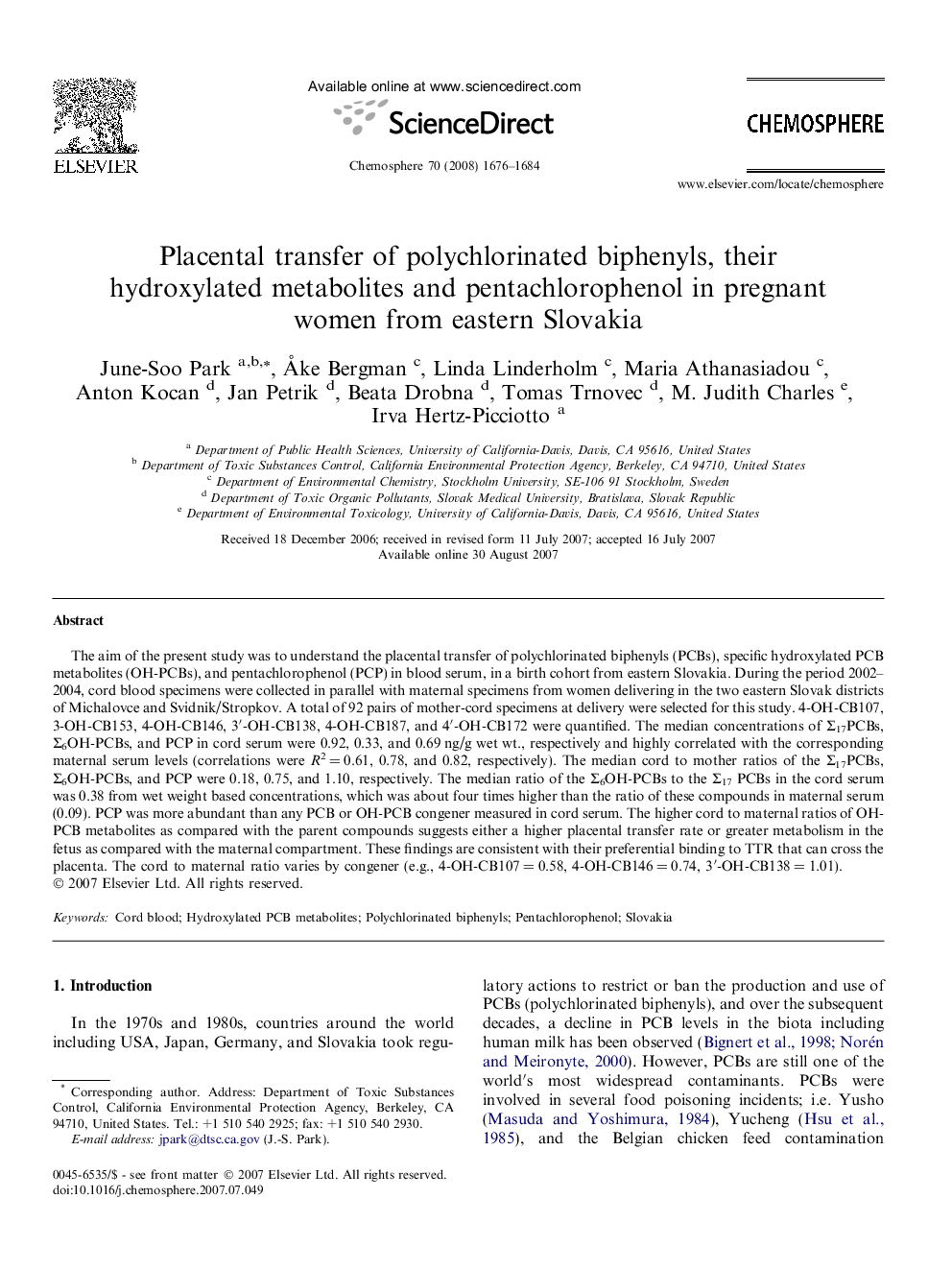| Article ID | Journal | Published Year | Pages | File Type |
|---|---|---|---|---|
| 4414185 | Chemosphere | 2008 | 9 Pages |
The aim of the present study was to understand the placental transfer of polychlorinated biphenyls (PCBs), specific hydroxylated PCB metabolites (OH-PCBs), and pentachlorophenol (PCP) in blood serum, in a birth cohort from eastern Slovakia. During the period 2002–2004, cord blood specimens were collected in parallel with maternal specimens from women delivering in the two eastern Slovak districts of Michalovce and Svidnik/Stropkov. A total of 92 pairs of mother-cord specimens at delivery were selected for this study. 4-OH-CB107, 3-OH-CB153, 4-OH-CB146, 3′-OH-CB138, 4-OH-CB187, and 4′-OH-CB172 were quantified. The median concentrations of Σ17PCBs, Σ6OH-PCBs, and PCP in cord serum were 0.92, 0.33, and 0.69 ng/g wet wt., respectively and highly correlated with the corresponding maternal serum levels (correlations were R2 = 0.61, 0.78, and 0.82, respectively). The median cord to mother ratios of the Σ17PCBs, Σ6OH-PCBs, and PCP were 0.18, 0.75, and 1.10, respectively. The median ratio of the Σ6OH-PCBs to the Σ17 PCBs in the cord serum was 0.38 from wet weight based concentrations, which was about four times higher than the ratio of these compounds in maternal serum (0.09). PCP was more abundant than any PCB or OH-PCB congener measured in cord serum. The higher cord to maternal ratios of OH-PCB metabolites as compared with the parent compounds suggests either a higher placental transfer rate or greater metabolism in the fetus as compared with the maternal compartment. These findings are consistent with their preferential binding to TTR that can cross the placenta. The cord to maternal ratio varies by congener (e.g., 4-OH-CB107 = 0.58, 4-OH-CB146 = 0.74, 3′-OH-CB138 = 1.01).
